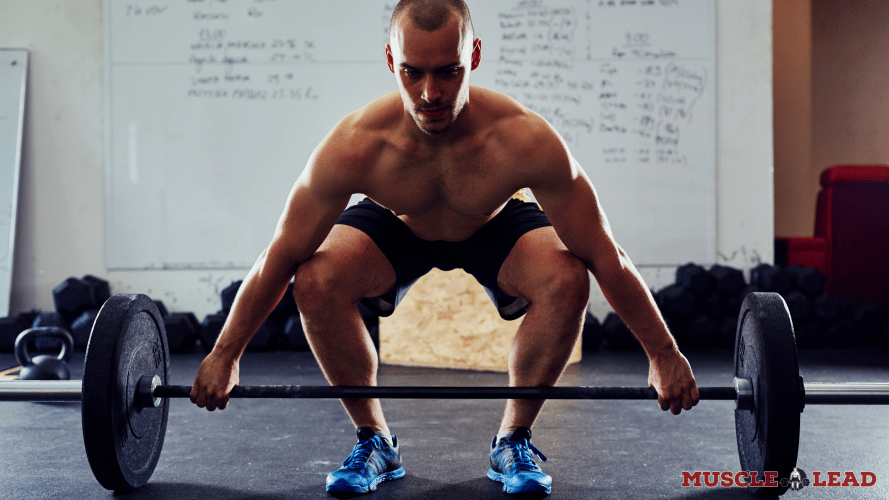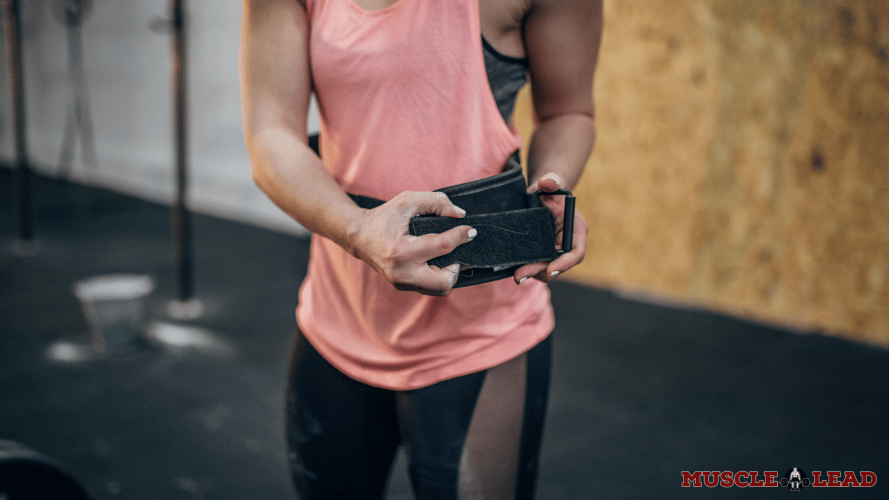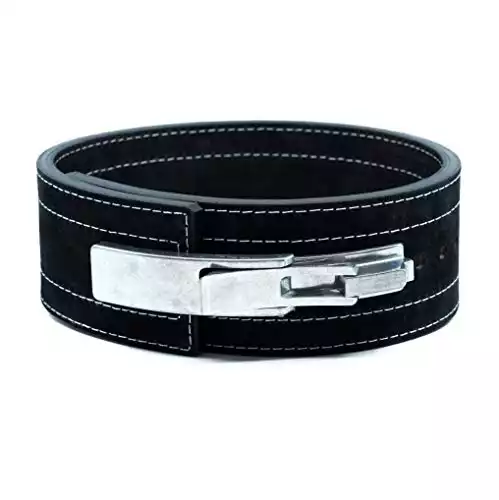Key Points
- This 10mm vs 13mm detailed comparison guide applies to all types of lifting belts like weightlifting belts, powerlifting belts or lever lifting belts.
- The thickness of a belt matters because it allows you to perform your breathing and bracing at a peak level.
- 10mm belts are recommended for beginners and intermediate-level lifters.
- Elite lifters or athletes should go for a 13mm lifting belt.
A few millimeters make a world of a difference.
Going to a thicker weightlifting belt for workouts or competitions makes a significant impact on your training, fitness goals and lifting enjoyability.
Most athletes in the powerlifting world believe that the 10mm belt is only for beginners.
They would be wrong.
So what is the difference between a 10mm vs 13mm belt? Most people like the 10mm lifting belt and it’s definitely the most sought-after one.
Most 10mm belts are easier to break in and fit better during most lifts. They also have more style and design options. The 13mm belt offers more support and security during heavy lifts, especially squatting. The biggest downfall of 13mm belts is that they’re very stiff and uncomfortable.
Now that you know the short answer, let’s break it down.
I’ll be going over the various differences, pros cons and training effects of the 10mm vs 13mm belt. You can use this guide to make a better decision for your belt purchase.
In a Hurry? Here’s My Recommendation
Most powerlifters will be happy with the 10mm lifting belt. Even if you’re lifting 300lbs plus, the 10mm belt will serve its function.
The best 10mm belt on the market is the Inzer Forever Lever Belt. It’s one of the best powerlifting belts on the market.
A Top Choice For Powerlifters
Considered to be the standard in lifting belts, the Inzer Forever Belt comes with a lifetime guarantee. At 10mm and 4-inch width, its superb build quality and material make it ideal for all types of lifters.
Many powerlifters testify to the longevity of their Inzer Forever Belts. In fact, the next time you see a powerlifting champion, sneak a peek at their lifting belt.
You’ll likely see an Inzer Forever Lever Belt on their abdomen.
13mm vs 10mm – Yes, Belt Thickness Matters
The main difference between a 13mm and 10mm weightlifting belt is the thickness.
In terms of proportions, the 13mm belt is 30% thicker than the 10mm version. Think of that for a second. A 30% increase in your squat would be monumental.
Now, think of a 13mm belt all around your torso. To really understand the impact of these additional 3mm belt thicknesses, we have to go back to the function of weightlifting belts. A powerlifter will know right away but what about others?
The weightlifting belt is closed rigidly around the waist so that it creates a wall against your torso. All your core muscles (abs, obliques, lower back, lats) will push against the belt during lifts such as the deadlift.
This movement creates pressure in your abdomen (Intra-abdominal pressure). The IAP gives you added force while performing an exercise. Powerlifters take advantage of this IAP to increase their numbers and strength.
Now, because the powerlifting belt basically fulfills the role of a wall, you don’t want this wall to bend or stretch under a heavy load. A thicker wall creates a hard surface to push against.
Powerlifting Belt Width – 3 or 4 Inch
Weightlifting Belt Width – 4 or 6 Inch
Training Differences Between a 10mm and 13mm Belt
If your belt is thicker, the chances of it bending from your core muscles pushing against it are much lower.
Many lifters say there is a tangible difference and it improves their performance by a long shot. This is especially true when approaching your max lift potential.
Are there any downsides to this? Well, you have to trade the rigidity of the belt for your feeling of comfort in the torso area. How much comfort you are going to lose depends heavily on your body type, torso girth, or the type of exercise that you perform.
For instance, if you are going to be doing exercises that imply a bent-over position, such as deadlifts, you will feel the belt being much harsher on your waist than in other cases.
But if you are a lightweight type of weight lifter, chances are you won’t have to worry about this issue.
So, how does the 13mm compare to the other contender on the list in terms of rigidity?
10mm Has More Flexibility and Accessibility
10mm belt is more flexible and accessible as compared to a 13mm belt.
Yes, the 10mm belt is not going to be as stiff as the 13mm, but this comes with the added flexibility that can be beneficial to some lifters.
Why is that? Because it is easier to have your breathing in check while using this type of weightlifting belt. As you may already know, breathing correctly is an essential part of getting the most out of your powerlifting belt.
If the breathing is flawed, or, say, hindered by the thickness of a belt, the output of the lifter will be lesser than in a contrary case. This is why flexibility matters, counterintuitive as it is.

Bonus points for being more comfortable on the waist, allowing lifters to use the belt for more exercises than the 13mm one. Due to the extra comfort, the feeling of suffocating tightness won’t appear, not even in the case of bent-over exercises.
This makes the 10mm more accessible to all kinds of exercise.
13mm Takes Longer to Break In
13mm takes more time to break in. While a 10mm belt is easier to break in.
A belt is a piece of gym equipment made out of leather. As we know, leather is a tough, rigid material that needs to be broken into before it can be used properly.
What is breaking in exactly? It is when a leather and suede material starts to be more flexible and malleable. In the case of the weightlifting belt, you want the material to mold around your torso nicely, the whole 360 degrees.
Now, the difference in thickness indicates one thing for certain: the 13mm is going to be harder to break into.
Let’s make a comparison in terms of time.
Is anything inherently wrong with that? No, not at all.
But this is an important thing to mention, as those of you who never used a belt before and want to incorporate it into your gym routine will probably want it to be broken into as quickly as possible.
More flexibility around the torso means the optimal output of the exercise. If this is what you are after, you might want to give the 13mm a second thought.
10mm is More Beginner Friendly
There are more benefits to be reaped from the 10mm belt. The 13mm belt is not recommended for a beginner.
Given the short time for breaking in, the added flexibility of the material, the extra comfort, and the ease of efficient use, the 10mm belt is the best option for beginners without any doubt.
This does not mean that it is the best for all other categories of lifters, but simply that in the case of beginners, its benefits and added value represent a big advantage.
In my books, this category is settled by default.
13mm is Best for Elite Athletes
While the 10mm is an amazing piece of equipment for beginners, the 13mm is the best shot that elite lifters have at making a meaningful progression beyond their biological limits.
Although no study out there successfully concluded this matter, it is theorized that the added thickness of the 13mm should provide more support to the core muscles.
In the case of athletes who have already mastered the technique, breathing and have considerable strength, relying on this added support may be the best shot at progressing further.
Of course, this is not restricted only to the belt. Elite lifters must always strive to make the most out of their equipment, as even the slightest of improvements can make an enormous difference.
This category may not yet be settled, but a huge advantage goes over the 13mm camp.
13mm Belts Have Limited Options
You can find more designs and styles for a 10mm belt. While a 13mm belt has very limited options available.
There aren’t many companies on the market that produce the 13mm thickness for powerlifting and weightlifting belts. Why?
Well because it’s suitable for elite-level athletes and bigger lifters mainly. Due to these specifications, companies need to ensure that the belts are built tough and durable.
A professional powerlifter failing due to his 13mm lifting belt that was not built well could ruin the company’s reputation.
Some of the biggest names in the powerlifting equipment market produce great 13mm belts. These names include Rogue, Inzer, and Iron Bull Strength.
Each of these companies offers single prong, double prong, and lever options for their belts.
10mm Belts Yield Better Value
Due to the level of construction, material and size of the 13mm belt, the cost to build it is usually more.
Higher cost for the manufacturer means higher cost to you, the weightlifters and powerlifters.

Most 10mm belts on the market cost less than $100 and offer lifetime guarantees. On the opposite end of the spectrum, the most expensive belt on the market, the 13mm SBD Belt doesn’t have a guarantee.
SBD vs Inzer Belt – Key Differences
Should You Get a 10mm or 13mm Belt?
We now have two polar opposites on the thickness scale.
On one side, we have the beginner lifters, at least in terms of using a belt, where the 10mm is a better fit. On the other, we have the elite camp, where the 13mm excels at providing extra support for those who mastered the technique.
If you are a lifter in the intermediate category, the same holds true. You may have great technique and posture and may be interested in switching to a 13mm belt, or you may only be getting the hang of powerlifting exercises properly, thus looking more into the 10mm.
The only moment you want to switch to a 13mm belt is when you truly feel that you exhausted all your other options in terms of progressing with heavier loads. Then, it may make enough of a difference for you to benefit from the purchase.
If you don’t find yourself in this situation, keep using the 10mm belt. Ultimately, it all comes down to what gym experience you want for yourself.
Pros and Cons
10mm Belt
The 10mm belt is usually best for powerlifters and weightlifters alike. At this belt thickness, you can progress in strength without a long break-in period. You won’t experience much discomfort and you’ll enjoy wearing your belt during lifts.
- Increase energy levels
- Improve balance
- Lose weight
- Improve joint mobility
- You’ll feel less secure at the waist
- Can’t squeeze out elite strength gains
- Not flexible for regular non-strength workouts
13mm Belt
In summary, consider the thicker powerlifting belt if you plan to compete or lift very heavy. In addition, be prepared for many months of discomfort, especially for larger lifters.
- The better feel of security at heavy loads
- Ideal for heavy squats
- Best for larger lifters
- Approved for most competitions
- Higher strength and mass gains for elite-level competitors
- Depending on your preference, you’ll like how high up you can wear the belt
- Stiffer and takes longer to break in
- Usually more expensive
- Tough to use for women and smaller lifters
- Will dig into your hip and waist during bending movements
How Long does it Take to Break in a Belt?
The 10mm belt takes about a month to break in, while the 13mm can go as far as an entire year. But the basics of doing it stay the same with each case.
There is no one secret technique done by everybody to break in the belt faster. Instead, you just have to consistently use the belt during your exercises. The more strain you put on the material, the more malleable it will be in the near future.
How to Break in a Lifting Belt – Five Effective Ways
Final Thoughts
There you have it! A comprehensive guide to getting the best fit in belt thickness that you can.
For many lifters, the decision will be easy, get the 10mm belt. As long as you’re focusing on getting stronger, this belt thickness will allow you to break strength plateaus.
If you’re considering a 13mm belt, you’re either a larger-strength athlete or compete at an elite level. At this level, you will significantly gain benefits from the thickness which will allow you to improve your performance overall.
The 10mm vs 13mm belt question is not a difficult one to answer once you know the reasons behind them. Let me know if you have any comments below!
FAQs
Yes it depends on the type of lifter you are. A thicker 13mm lifting belt is stiffer and takes a longer to break in. Whereas, a 10mm lifting belt is good for intermediate and beginners as it can help train the bracing pattern during lifts.
Yes the 13mm belt is approved by the IPF and recognized by all powerlifting organizations. Most 13mm belts are also approved by the USPA.
References
National Library of Medicine Study: https://pubmed.ncbi.nlm.nih.gov/2304406/
British Journal of Sports Medicine: https://www.ncbi.nlm.nih.gov/pmc/articles/PMC1479027/
Need more Help with Lifting Belts?






